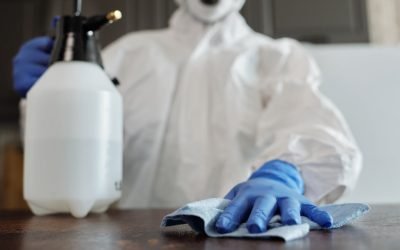Floods hit hard. The mess spreads fast. If we don’t act quickly, the harm gets worse. Water seeps in deep. It soaks floors, walls, and wires. Mold starts to grow in less than a day. That is why we must know what to do right after a flood.
The first 24 hours count the most. A plan helps. It keeps us safe. It cuts loss. It speeds up flood damage restoration. If we wait too long, the fix will cost more.
We will break down the first steps. The right moves now will save time and cash. Let’s go through what must be done right away.
Check if It’s Safe to Enter
Floods cause more than just a wet mess. They bring risks we can’t see. Before we step in, we must check if it’s safe.
Water and power don’t mix. If water reached the wires, there is a risk of shock. We must turn off power at the main box if we can reach it safe. If not, we should call an expert.
Walls and floors can be weak. Wood soaks up water fast. If we see cracks or sagging, we should not step in. The weight of water can bring down floors.
Floods can bring in bad stuff. If the water comes from drains, it may have waste in it. That means germs and bad air. We must wear boots and gloves. If the smell is strong, we need masks.
Stop More Water From Coming In
Once we know it’s safe, we must stop more water from getting in. If the flood came from rain, we must check leaks. A broken roof or window can let more in.
If a pipe bursts, we must shut off the main water line. Even a slow leak adds more mess.
If the flood comes from drains, we may need help to stop the backup. We should not touch the water with bare skin. It may have bad waste in it.
Stopping more water helps us start flood damage restoration fast. The less water sits, the less harm it does.
Move Out What Can Be Saved
Some things dry fast. Some don’t. If we act quickly, we can save more.
We should move dry stuff to a safe spot. If rugs or cloth items get wet, we must hang them to dry. If they stay wet too long, mold will grow.
Books, papers, and small wood items should be dried right away. Fans and the sun help. If we can’t dry them fast, they may not be saved.
Big items like beds and couches hold water deep. If they are soaked, they may be too far gone. The same goes for carpets that sat in water too long.
Get the Water Out Fast
Standing water is the worst. The longer it sits, the worse the harm. We must get it out fast.
If there is a lot of water, we may need pumps. If it’s just small pools, we can use mops and towels. A wet vacuum helps, too.
We must check all the spots. Water hides in cracks. It seeps under floors. If we miss it, mold will grow. That makes flood damage restoration harder.
Once the bulk of the water is gone, we must dry the space. Fans and air flow help. Dehumidifiers speed up the process. The goal is to dry it all within a day.
Check for Hidden Damage
Floods don’t just wet things. They weaken them. Once the water is out, we must check what’s left.
Walls soak up water. If they feel soft, they may need to go. If we leave them, mold will grow inside.
Wood floors swell. If they start to warp, they won’t go back to shape. They may need to be pulled up.
Wires and outlets that got wet may be unsafe. We should not turn on power until they are checked. A short can start a fire.
Hidden damage makes flood damage restoration take longer. The faster we check, the faster we fix.
Stop Mold Before It Starts
Mold loves wet spots. It grows fast. In just a day, spores start to spread.
To stop mold, we must dry all wet things quick. Fans, open windows, and dehumidifiers help. Sunlight works well, too.
We should scrub hard surfaces with a strong cleaner. Bleach or vinegar help kill mold before it spreads.
If we see dark spots on walls or floors, mold may already be there. If it spreads too far, we may need expert help to get rid of it.
Mold makes flood damage restoration harder. If we stop it now, we save a lot of work later.
Call for Help If Needed
Some floods are too big to fix alone. If the mess is too much, we may need help.
If water gets into the walls or the home’s base, an expert should check it. If mold is in the air, it can harm us. If wires get wet, a pro must check them.
We should check what our home insurance covers. Some plans pay for flood damage restoration. If we wait too long to call, we may not get paid back.
A big flood is hard to deal with. The right help can make the fix fast and safe.
Final Thoughts
We must act quickly after a flood. The first 24 hours are the most key. If we wait, water soaks in too deep. The mess gets worse. Mold spreads fast. The cost to fix it all goes up.
We must check for risk first. We must stop more water from getting in. We must dry all we can, get rid of bad water, and check for harm. If we stop mold now, we save time later.
Flood damage restoration takes work. But if we move fast, we can cut loss. We must plan smart, act quick, and get help if needed. That way, we get back to a dry, safe space sooner.


0 Comments